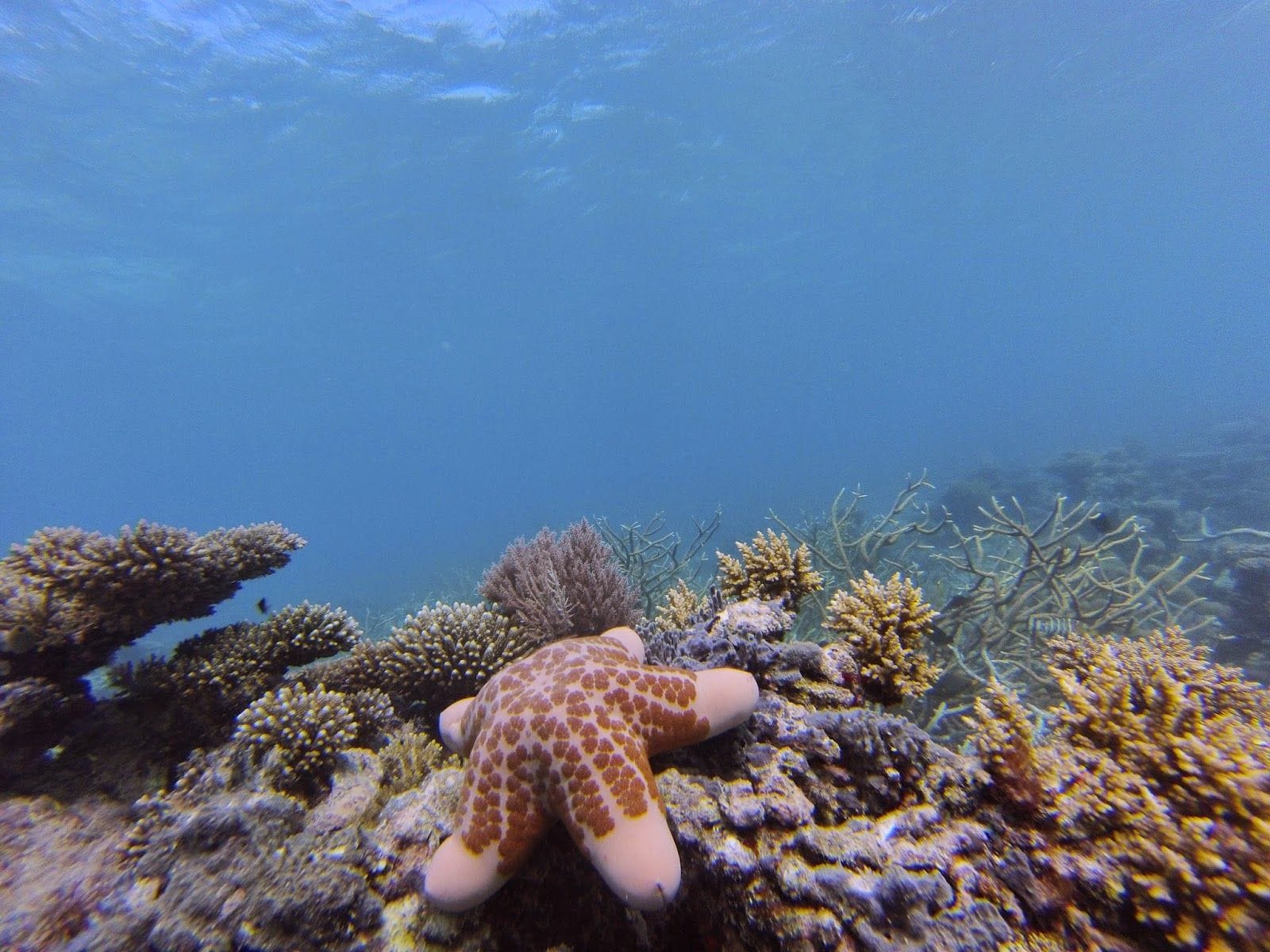Embark on a journey into the captivating world of the doughboy starfish (*Choriaster granulatus*), a unique and intriguing inhabitant of the Indo-Pacific ocean. Discover its distinctive features, preferred habitats, unusual feeding habits, and the crucial role it plays in maintaining the delicate balance of its ecosystem.
The Doughboy Starfish: A Unique Echinoderm
The Choriaster granulatus, affectionately known as the doughboy starfish, distinguishes itself from other starfish with its remarkably plump, cushion-like body and five short, rounded arms. This unusual morphology, resembling a plump bun, inspires its common name. Its body exhibits a spectrum of colors, from pale pink with radiating brown papillae (small projections) to shades of grey, yellow, and even red. These starfish can reach an impressive size, with a maximum radius of approximately 27 centimeters (11 inches).
Appearance and Distinguishing Features
The doughboy’s unique physique sets it apart. Unlike the typical starfish with long, slender arms, C. granulatus features short, thick, rounded arms, creating its characteristic plump, almost inflated appearance. The body surface varies in color, ranging from soft pinks and subtle greys to vibrant yellows and reds, often speckled with tiny brown bumps called papillae. These papillae not only add to its unique appearance but likely serve sensory or respiratory functions, though further research is needed to confirm their exact role. No two doughboy starfish look precisely alike, making each encounter a special observation of natural variation.
A Gentle Giant of the Reef
Despite its carnivorous diet, this harmless sea star poses no threat to humans, coexisting peacefully amongst corals and sponges. Its gentle nature and slow movements make it a fascinating subject for underwater observation.
Habitat and Distribution: Where Does the Doughboy Reside?
The C. granulatus prefers the warm, shallow waters of the Indo-Pacific region, frequenting sandy bottoms, rubble slopes, and areas rich in detritus (decaying organic matter), corals, and sponges. This adaptability allows them to thrive in diverse locations across the Indo-Pacific, from the bustling reefs of Australia to the Red Sea, and various islands throughout the Indian and Pacific Oceans. They are typically found at depths ranging from 1 to 40 meters (3 to 130 feet).
Indo-Pacific Icon
From the Red Sea to Australia, this distinctive sea star graces the vibrant ecosystems of the Indo-Pacific region. Its presence is a testament to the region’s rich biodiversity and the intricate web of life that connects its inhabitants.
Diet and Feeding: The External Digestion Expert
The doughboy starfish is a carnivore with a rather extraordinary feeding strategy. It primarily feeds on small invertebrates, including coral polyps, the tiny architects of coral reefs. Unlike most animals, the doughboy starfish employs a remarkable method of external digestion. It pushes its stomach out of its mouth and engulfs its prey, secreting digestive enzymes that break down the food outside its body. The resulting nutrient-rich liquid is then absorbed, and the stomach retracts. This process allows it to consume organisms larger than its mouth, demonstrating a unique adaptation to its environment.
A Cleanup Crew of the Reef
C. granulatus also plays a crucial role as a scavenger, consuming carrion and other organic matter, contributing to the overall health and cleanliness of the reef ecosystem. This scavenging behavior, combined with its predation on small invertebrates, makes it an essential player in the reef’s delicate balance. Ongoing research suggests that their feeding habits may shift in response to changes in prey availability or environmental conditions.
Ecological Role: Maintaining Balance in a Complex Ecosystem
By consuming small invertebrates, the doughboy starfish plays a vital part in regulating populations, preventing any single species from becoming too dominant and disrupting the delicate balance of the reef ecosystem. This role is crucial for a healthy and thriving reef environment. However, more research is needed to fully understand the long-term impacts of their feeding activities and how they interact with other species within the complex web of reef life.
Uncertain Future, Ongoing Research
While currently relatively common, the doughboy starfish’s future remains uncertain. Ongoing research is crucial to determining its conservation status and vulnerability to threats like climate change and habitat degradation. Some experts believe that rising sea temperatures and ocean acidification could significantly impact their food sources and overall survival. Understanding their resilience and adaptability to these changing conditions will be vital for developing effective conservation strategies.
Reproduction, Life Cycle, and Unanswered Questions
There is still much to uncover about the doughboy starfish’s life cycle and reproductive habits. Researchers are actively working to understand their reproductive processes: How frequently do they reproduce? What type of larval stage do they have? What is their lifespan? How does their reproductive success fluctuate in response to changing environmental conditions? These are just a few of the many questions that ongoing studies aim to address. Additionally, there’s limited knowledge about their specific needs in aquarium settings, making further research in this area essential for responsible husbandry.
Open Questions and Future Directions
The scientific community is still exploring many aspects of Choriaster granulatus biology, including:
- Genetic diversity: How much genetic variation exists within doughboy starfish populations, and how does this relate to their resilience in the face of environmental change?
- Specific sensitivities: Are they particularly vulnerable to pollutants, specific diseases, or other environmental stressors?
- Symbiotic relationships: Do they form any important symbiotic relationships with other organisms on the reef?
- Role in nutrient cycling: What is their precise contribution to nutrient cycling and energy flow within the reef ecosystem?
Scientific Classification and Taxonomy
- Kingdom: Animalia
- Phylum: Echinodermata
- Class: Asteroidea
- Order: Valvatida
- Family: Oreasteridae
- Genus: Choriaster
- Species: Choriaster granulatus
The doughboy starfish is unique in being the sole member of its genus, Choriaster. This makes it a particularly interesting subject for evolutionary biologists seeking to understand its lineage and relationship to other sea star families.
Additional Interesting Facts
- The granular texture of their skin, due to the papillae, may play a role in camouflage or protection against predators.
- While generally slow-moving, they can exhibit surprising bursts of speed when pursuing prey or escaping danger.
- They have remarkable regenerative abilities, capable of regrowing lost arms, although the process can take several months.
- The vibrant colors of C. granulatus likely serve a purpose, possibly for communication, camouflage, or warning potential predators.
Discover the enchanting callistemon viminalis, a captivating shrub famed for its vibrant, bottlebrush-like blooms, adding a touch of magic to any garden.
Delve into the world of aromatics with the champaca tree, whose fragrant flowers have captivated hearts and inspired perfumers for centuries.
- Crypto Quotes’ Red Flags: Avoid Costly Mistakes - June 30, 2025
- Unlock Inspirational Crypto Quotes: Future Predictions - June 30, 2025
- Famous Bitcoin Quotes: A Deep Dive into Crypto’s History - June 30, 2025

















1 thought on “Choriaster Granulatus (Doughboy Starfish): A Comprehensive Guide”
Comments are closed.